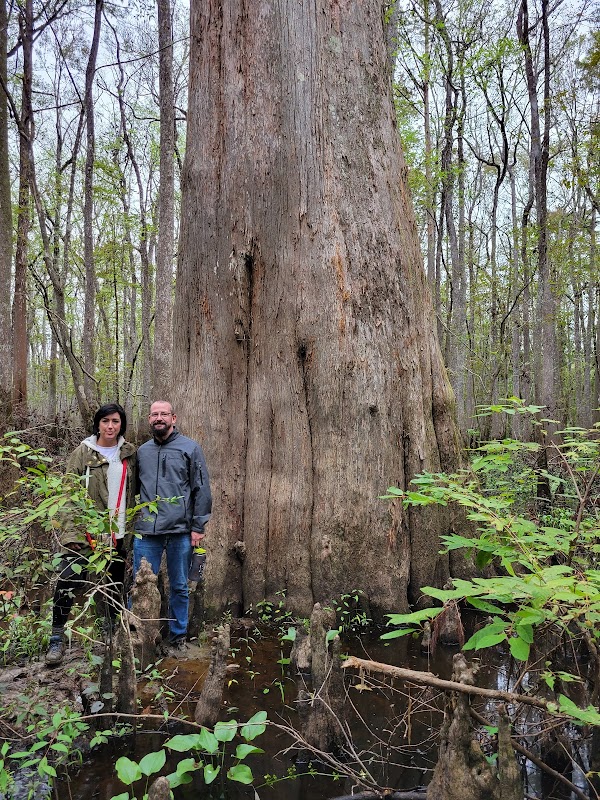
Shell Mounds and Spirit Islands: Exploring Alabama's Indigenous Coastal Heritage
Trace the footsteps of Alabama’s indigenous peoples by visiting shell mounds and Spirit Islands along the Gulf Coast. This guide equips you to explore these living historical sites while navigating their coastal terrain and seasonal rhythms safely and knowledgeably.
Timing Your Visit
Plan hikes during spring or fall to avoid coastal summer heat and humidity, which can be intense and draining.
Wear Appropriate Footwear
Choose sturdy, water-resistant shoes with good traction for sandy, muddy, and sometimes slick shell paths.
Carry Adequate Hydration
Bring at least 2 liters of water per person, as coastal winds and sun can dehydrate you faster than expected.
Check Tide and Weather Conditions
When paddling to Spirit Islands, review tide charts and local forecasts to navigate strong currents safely.
Shell Mounds and Spirit Islands: Exploring Alabama's Indigenous Coastal Heritage
Alabama’s Gulf Coast holds stories carved by time and tide, most visible in the shell mounds and Spirit Islands along its shores. These sites, shaped by indigenous peoples thousands of years ago, invite adventurers to walk paths through living history where nature still holds sway.
Start at the Bon Secour National Wildlife Refuge, where trails lead to shell mounds—heaps of oyster and clam shells left by Native Americans who thrived on coastal resources. The landscape here is low and marshy, with an elevation gain under 100 feet, making the hike accessible but with sections where footing demands attention. Mangroves and salt marsh grasses bustle with life, and the breeze from the nearby Gulf carries salt and sunlight, daring you deeper into the heritage of this coast.
Spirit Islands, located just offshore near Dauphin Island, offer a more elusive experience. Accessible by kayak or small boat, these islands were once spiritual sanctuaries and seasonal camps for the indigenous Mobile-Tensas and Choctaw peoples. The currents around them are powerful, urging paddlers to respect the rhythms of water and wind. The islands’ shell middens rise like ancient markers amid dense maritime forest, where live oaks and palmettos sway as guardians of memory.
For those planning the journey, consider timing your visit in spring or fall to avoid the summer heat and coastal humidity. Layers are essential—thick-soled footwear for the sandy and sometimes slippery terrain, sun protection, and enough water to stay alert under the sun’s gaze. The trails to shell mounds are straightforward but can be muddy after rains; tide knowledge is vital around Spirit Islands to safely navigate the paddling route.
This is an adventure that asks you to engage fully, to read the landscape forged by nature and history. It’s less about conquering a trail and more about walking alongside a fierce, living coastline, where every shell mound speaks of generations who both shaped and respected their surroundings. Whether stepping softly through marsh grass or paddling through waves that push and pull with intent, you connect with a place fiercely itself, an enduring link between past and present.
Explore with eyes open and heart steady; Alabama’s indigenous coastal sites offer a journey of discovery imbued with rugged beauty and ancestral echoes.
Nearby Trips
All Adventures
Boat Charters
Water Activities
Adventures near Dauphin Island, Alabama
Discover the unique and memorable adventures that make Dauphin Island, Alabama special.
Frequently Asked Questions
What are shell mounds and why are they important?
Shell mounds, or middens, are ancient refuse piles composed mainly of discarded shells from oysters, clams, and other seafood. They serve as archaeological records of indigenous diets, settlement patterns, and environmental interaction over millennia.
How do I safely access Spirit Islands?
Spirit Islands are reachable only by kayak or small boat. Ensure you check tide charts and weather forecasts ahead of time and have competent paddling skills. Local outfitters can provide rentals and guidance.
Are these sites protected or regulated?
Yes. Many shell mounds fall under federal or state protection to preserve their archaeological and natural integrity. Visitors should respect signage, avoid disturbing artifacts, and stay on designated trails.
When is the best time of day to explore these areas?
Early morning offers cooler temperatures and tranquil light, especially for photography and wildlife spotting. Late afternoon also provides softer light but prepare for incoming tides near islands.
What wildlife might I encounter?
Expect shorebirds like herons and egrets, marsh critters such as fiddler crabs, and occasionally dolphins offshore. The forests attract songbirds and small mammals as well.
Can I camp near these sites?
Camping directly at shell mound sites and Spirit Islands is generally not permitted to protect the cultural heritage. Nearby campgrounds on Dauphin Island and public parks provide suitable accommodation.
Recommended Gear
Water-resistant hiking shoes
Protect feet from wet sand and slippery shells while providing good support and traction.
Lightweight hydration pack
Keeps you hydrated during long hikes and paddling trips, especially in warmer months.
Sunhat and UV-protection clothing
Shields skin from strong Gulf Coast sun during exposed sections of the trail and open water.
Dry bag for kayaking gear
Keeps personal items and electronics dry when paddling to Spirit Islands across variable currents.
Local Insights
Hidden Gems
- "A quiet overlook near Shell Mound Trail reveals panoramic views of Bon Secour Bay where tide water glistens against natural salt flats."
- "The narrow estuary channels between Spirit Islands act as natural corridors for changing wildlife—watch for glimpses of river otters in early morning."
Wildlife
- "Migratory shorebirds like the reddish egret and painted bunting appear seasonally."
- "Coastal waters are home to bottlenose dolphins that sometimes escort kayakers."
History
"These shell mounds tell a story of indigenous communities who relied on the bounties of the sea and respected the balance between resource gathering and conservation. Spirit Islands were sacred ground, used for seasonal rituals tied to the rhythms of nature."
